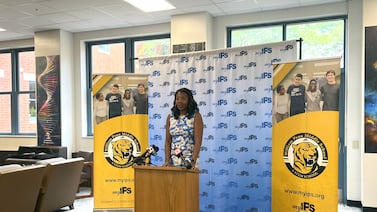Illinois is expected to receive about $2.3 billion in federal funds for schools from the second stimulus bill that passed in late December.
Congress approved a stimulus bill that will inject $54 billion into kindergarten to 12th grade public education. That is four times more than what schools across the country received in the spring when the coronavirus pandemic first shut down school buildings. However, it is significantly less than what public school advocates were fighting for. Advocates were hoping for $150 billion to $250 billion to help states fill gaps in their education budget and assist local school districts with new costs caused by the pandemic.
Unlike the first stimulus bill in March, public school districts will not have to divide the pot of money with private schools.
In the spring, Illinois received more than $569 million. A portion of the money was divided among local school districts. The other portion of funds went to purchasing technology for school districts to do remote learning and partnering with the state’s union to create a mentoring program for long-term educators and first-year teachers.
According to federal law, the state has to distribute 90% of federal funds to local schools through Title I — which means about $2 billion will go to individual districts. The state board can keep around $225 million and use $11 million for administrative costs. However, the state has not said whether it will add funds to boost initiatives created in response to the pandemic during the spring.
Chicago announced that it will receive about $800 million based on its own calculation, with nearly $350 million going to fill a midyear budget hole.
The infusion of federal money should be useful in a year when the state’s education budget was flat. During last month’s board of education meeting, the state weighed whether to ask for an increase of $412 million to its almost $9 billion budget. The governor’s budget address is expected to take place in February.
Whether the infusion of federal dollars will spur more districts to physically reopen campuses remains to be seen. As of Jan. 6, more than 60% of Illinois students were learning remotely, according to the state school board, and about 30% attended school in a district blending in-person and remote learning. Less than 10% were in a district that had returned to in-person learning full-time. President-elect Biden has said he’d like to see the majority of the nation’s schools safely reopen in his first 100 days of office.







